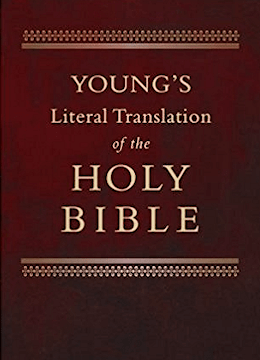Textus Receptus Bibles
Young's Literal Translation 1862
| 6:1 | Whither hath thy beloved gone, O fair among women? Whither hath thy beloved turned, And we seek him with thee? |
| 6:2 | My beloved went down to his garden, To the beds of the spice, To delight himself in the gardens, and to gather lilies. |
| 6:3 | I `am' my beloved's, and my beloved `is' mine, Who is delighting himself among the lilies. |
| 6:4 | Fair `art' thou, my friend, as Tirzah, Comely as Jerusalem, Awe-inspiring as bannered hosts. |
| 6:5 | Turn round thine eyes from before me, Because they have made me proud. Thy hair `is' as a row of the goats, That have shone from Gilead, |
| 6:6 | Thy teeth as a row of the lambs, That have come up from the washing, Because all of them are forming twins, And a bereaved one is not among them. |
| 6:7 | As the work of the pomegranate `is' thy temple behind thy veil. |
| 6:8 | Sixty are queens, and eighty concubines, And virgins without number. |
| 6:9 | One is my dove, my perfect one, One she `is' of her mother, The choice one she `is' of her that bare her, Daughters saw, and pronounce her happy, Queens and concubines, and they praise her. |
| 6:10 | `Who `is' this that is looking forth as morning, Fair as the moon -- clear as the sun, Awe-inspiring as bannered hosts?' |
| 6:11 | Unto a garden of nuts I went down, To look on the buds of the valley, To see whither the vine had flourished, The pomegranates had blossomed -- |
| 6:12 | I knew not my soul, It made me -- chariots of my people Nadib. |
| 6:13 | Return, return, O Shulammith! Return, return, and we look upon thee. What do ye see in Shulammith? |

Young's Literal Translation 1862
Young's Literal Translation is a translation of the Bible into English, published in 1862. The translation was made by Robert Young, compiler of Young's Analytical Concordance to the Bible and Concise Critical Comments on the New Testament. Young used the Textus Receptus and the Majority Text as the basis for his translation. He wrote in the preface to the first edition, "It has been no part of the Translator's plan to attempt to form a New Hebrew or Greek Text--he has therefore somewhat rigidly adhered to the received ones."